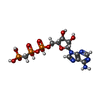Entry Database : PDB / ID : 4xlvTitle Crystal structure of the activated insulin receptor tyrosine kinase dimer Insulin receptor Keywords / / / Function / homology Function Domain/homology Component
/ / / / / / / / / / / / / / / / / / / / / / / / / / / / / / / / / / / / / / / / / / / / / / / / / / / / / / / / / / / / / / / / / / / / / / / / / / / / / / / / / / / / / / / / / / / / / / / / / / / / / / / / / / / / / / / / / / / / / / / / / / / / / / / / / / / / Biological species Homo sapiens (human)Method / / Resolution : 2.3 Å Authors Hubbard, S.R. / Li, S. Funding support Organization Grant number Country National Institutes of Health/National Institute of Diabetes and Digestive and Kidney Disease (NIH/NIDDK) DK052916
Journal : Nat Commun / Year : 2015Title : The insulin and IGF1 receptor kinase domains are functional dimers in the activated state.Authors : Cabail, M.Z. / Li, S. / Lemmon, E. / Bowen, M.E. / Hubbard, S.R. / Miller, W.T. History Deposition Jan 13, 2015 Deposition site / Processing site Revision 1.0 Mar 25, 2015 Provider / Type Revision 1.1 Sep 20, 2017 Group / Derived calculations / Source and taxonomyCategory / pdbx_audit_support / pdbx_struct_oper_listItem / _pdbx_audit_support.funding_organization / _pdbx_struct_oper_list.symmetry_operationRevision 1.2 Dec 25, 2019 Group / Category / Item Revision 1.3 Oct 23, 2024 Group Data collection / Database references ... Data collection / Database references / Derived calculations / Structure summary Category chem_comp_atom / chem_comp_bond ... chem_comp_atom / chem_comp_bond / database_2 / pdbx_entry_details / pdbx_modification_feature / pdbx_struct_conn_angle / struct_conn / struct_conn_type Item _database_2.pdbx_DOI / _database_2.pdbx_database_accession ... _database_2.pdbx_DOI / _database_2.pdbx_database_accession / _pdbx_struct_conn_angle.ptnr1_auth_seq_id / _pdbx_struct_conn_angle.ptnr3_auth_seq_id / _pdbx_struct_conn_angle.value / _struct_conn.conn_type_id / _struct_conn.id / _struct_conn.pdbx_dist_value / _struct_conn.pdbx_leaving_atom_flag / _struct_conn.ptnr1_auth_comp_id / _struct_conn.ptnr1_auth_seq_id / _struct_conn.ptnr1_label_atom_id / _struct_conn.ptnr1_label_comp_id / _struct_conn.ptnr1_label_seq_id / _struct_conn.ptnr2_auth_comp_id / _struct_conn.ptnr2_auth_seq_id / _struct_conn.ptnr2_label_asym_id / _struct_conn.ptnr2_label_atom_id / _struct_conn.ptnr2_label_comp_id / _struct_conn.ptnr2_label_seq_id / _struct_conn_type.id
Show all Show less
 Yorodumi
Yorodumi Open data
Open data Basic information
Basic information Components
Components Keywords
Keywords Function and homology information
Function and homology information Homo sapiens (human)
Homo sapiens (human) X-RAY DIFFRACTION /
X-RAY DIFFRACTION /  SYNCHROTRON / Resolution: 2.3 Å
SYNCHROTRON / Resolution: 2.3 Å  Authors
Authors United States, 1items
United States, 1items  Citation
Citation Journal: Nat Commun / Year: 2015
Journal: Nat Commun / Year: 2015 Structure visualization
Structure visualization Molmil
Molmil Jmol/JSmol
Jmol/JSmol Downloads & links
Downloads & links Download
Download 4xlv.cif.gz
4xlv.cif.gz PDBx/mmCIF format
PDBx/mmCIF format pdb4xlv.ent.gz
pdb4xlv.ent.gz PDB format
PDB format 4xlv.json.gz
4xlv.json.gz PDBx/mmJSON format
PDBx/mmJSON format Other downloads
Other downloads 4xlv_validation.pdf.gz
4xlv_validation.pdf.gz wwPDB validaton report
wwPDB validaton report 4xlv_full_validation.pdf.gz
4xlv_full_validation.pdf.gz 4xlv_validation.xml.gz
4xlv_validation.xml.gz 4xlv_validation.cif.gz
4xlv_validation.cif.gz https://data.pdbj.org/pub/pdb/validation_reports/xl/4xlv
https://data.pdbj.org/pub/pdb/validation_reports/xl/4xlv ftp://data.pdbj.org/pub/pdb/validation_reports/xl/4xlv
ftp://data.pdbj.org/pub/pdb/validation_reports/xl/4xlv Links
Links Assembly
Assembly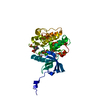

 Components
Components Homo sapiens (human) / Gene: INSR / Plasmid: pFASTBAC / Production host:
Homo sapiens (human) / Gene: INSR / Plasmid: pFASTBAC / Production host: 
 X-RAY DIFFRACTION
X-RAY DIFFRACTION Sample preparation
Sample preparation SYNCHROTRON / Site:
SYNCHROTRON / Site:  NSLS
NSLS  / Beamline: X12C / Wavelength: 0.987 Å
/ Beamline: X12C / Wavelength: 0.987 Å Processing
Processing Movie
Movie Controller
Controller



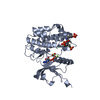



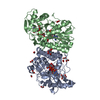
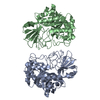
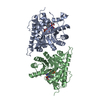
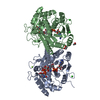

 PDBj
PDBj













